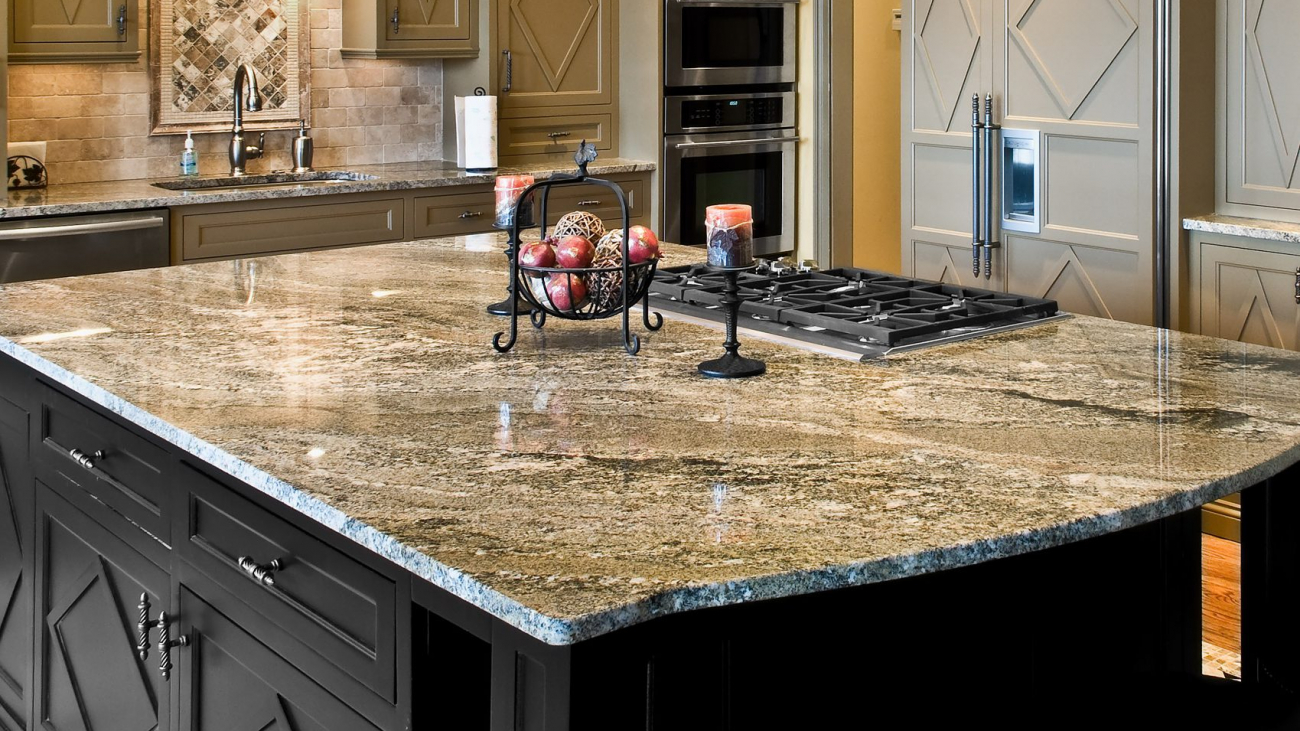Even though you can hire a professional to fix a granite chip, it’s relatively easy to fill the gap yourself if you feel confident. You can follow these steps for how to repair chipped granite:
1. Clean the Area
Before you start your granite chip repair project, make sure the area around the blemish is clean and dry so you don’t trap dirt or debris. Taking these preventative steps can ensure a smooth finish for filling in the small dent:
- Clear the clutter: Put any dishes, appliances and papers in another location so they don’t get sticky from the gel epoxy.
- Use the appropriate cleaner: You can clean the chipped area with nail polish remover or acetone, but you may also want to use a countertop cleaner with a sealer to preserve the countertops from future chipping. If you don’t have these items in your house, you can also use mild detergent and water to get rid of sticky residue. Make sure the surface is dry after you’ve cleaned it.
- Darken the surrounding area: If the chip caused the surrounding surface to lighten in color, you might be able to restore its appearance with a dark permanent marker. This writing utensil dries quickly, and the mark can last on your countertops for a long time. If your stone is a light color, you probably won’t need to change its look.
2. Fill the Chip With a Color-Matched Gel Epoxy
Use masking tape around the chipped area to guide how much gel epoxy to use. You may want to leave a little margin to blend the epoxy with the stone surface easily. Then, you can apply enough gel epoxy to fill in the chip by following these tips:
- Find a gel with the right color: If it’s not the same color as the granite, you can mix in color additives in a disposable plastic cup, using multiple mixes if your granite has a speckled design. You can also use a translucent epoxy if you don’t have access to these additives.
- Fill the chip with the epoxy: You’ll know if you put in a sufficient amount if it rises slightly above the stone’s surface but is flush with the masking tape.
- Apply a hardening spray: Once you’ve applied the epoxy into the granite’s chip, spray a hardening product onto the damaged area. Then, you can wipe away any excess spray from the surface around the tape.
3. Let the Epoxy Dry According to the Manufacturer’s Instructions
Wait and let the glue cure before you cut it with the razor. The drying process can take a few hours, depending on the chip’s depth and your home’s humidity. If you want to reduce how long it takes, you can:
- Add a Cyanoacrylate glue (CA) accelerator: This product only costs a few dollars and can rapidly harden the epoxy you used to fill in the chip. If you’re fixing a light-colored stone, be careful using it because it can make the repair take on a green stain that’s challenging to remove.
- Use a hardener spray: A hardener specifically for granite countertops can help set the epoxy and strengthen the area around the chip repair.
4. Remove the Excess Epoxy and Polish the Area
After the epoxy has completely dried, you can remove the tape you applied to the surrounding area and clean it up with these steps:
- Cut out the extra epoxy with a razor blade: To level the blemish with the rest of the countertop, you’ll need to get rid of the excess epoxy. Use the countertop’s surface to help you determine how to angle the razor blade. Shave the glue with a quick back-and-forth motion to conform to the stone’s surface. This process should only take a minute or two and will result in a smooth repair that looks almost like new.
- Buff the area with sandpaper or steel wool: If the filled-in chip’s sheen doesn’t match your stone, you can use finishing sandpaper or a buffing compound. A piece of steel wool can help provide a beautifully smooth finish for this part of your granite countertop.
- Apply a granite polisher: As the finishing touch, you can also use a granite polisher or sealer over the blemish to add shine to the area. The sealer can also prevent chipping in the future.
What Do You Do With a Crack or Fissure?
A crack is a line on the surface of your granite countertop that hasn’t broken the slab into separate parts. However, a fissure is a natural crack in the stone, and the manufacturer should recognize this blemish before installing it in your kitchen or bathroom.

